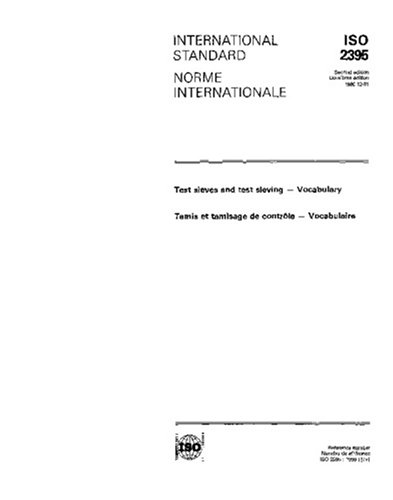


Winnowing and sieving are two different methods of separating the wanted elements from the unwanted ones in a mixture. These techniques have been used for centuries in various industries, including agriculture and food processing.
Winnowing is a process that involves the use of air to separate lighter elements from heavier ones. It is commonly used to separate chaff from grain or husks from seeds. In this method, the mixture is dropped from a certain height, creating a stream of air that carries away the lighter elements, while the heavier ones fall down.
Sieving, on the other hand, is a method that uses a mesh or screen to separate particles based on their size. It is commonly used to separate fine particles from coarse ones. The mixture is poured onto the sieve, and the particles smaller than the mesh size fall through, while the larger ones remain on top.
Both winnowing and sieving have their specific advantages and uses. Winnowing is an efficient method for separating light elements from heavy elements, while sieving allows for the separation of particles based on their size. These techniques have greatly contributed to the development of various industries, ensuring the production of high-quality products.
Understanding Winnowing and Sieving
In the context of agriculture and food processing, winnowing and sieving are two important techniques used to separate unwanted materials from desired ones. Both methods have been employed for centuries and are still widely used today in various industries.
Winnowing
Winnowing is a process that involves the separation of heavier components from lighter ones by using the wind or some other form of air current. This technique is commonly used to remove impurities like chaff or husks from grains, seeds, or cereals.
To winnow, the mixture is usually tossed in the air or subjected to a controlled air flow. The lighter unwanted materials, such as dust, debris, or broken pieces, are carried away by the wind or air current, leaving behind the desired product.
Historically, winnowing was done manually using tools like a winnowing fan or a winnowing basket. However, modern winnowing machines have been developed to automate the process and improve efficiency.
Sieving
Sieving, on the other hand, is a method of separating particles of different sizes using a sieve or a mesh screen. The principle behind sieving is based on the fact that smaller particles can pass through the holes of a sieve, while larger ones are retained.
Sieves are often made of metal, plastic, or wire mesh, and they come in various mesh sizes to accommodate different purposes. Fine sieves are used for sifting flour or sugar to achieve a smooth texture, while coarser sieves are used for filtering gravel or soil.
The process of sieving involves shaking or agitating the mixture to allow the smaller particles to fall through the sieve, while the larger particles are collected or discarded. Sieving is commonly used in industries such as construction, pharmaceuticals, and food processing.
Overall, winnowing and sieving are essential techniques in various industries for separating unwanted materials from desired ones. Whether it’s separating chaff from grains or filtering particles of different sizes, these processes play a crucial role in ensuring the quality and integrity of the final product.
Definition and Purpose of Winnowing
Winnowing is a traditional method of separating the chaff (unwanted parts) from the grain by exposing them to the wind or a current of air. It is one of the oldest agricultural techniques used worldwide.
The purpose of winnowing is to separate the edible grain from the inedible or undesirable parts, such as husks and stalks. This process is important for cleaning and refining the harvested grain, making it suitable for consumption or trade.
During winnowing, the raw mixture of grain and chaff is thrown into the air, allowing the lighter chaff to be carried away by the wind or air currents. The heavier grain falls back to the ground or onto a surface, separating from the chaff due to differences in weight and aerodynamic properties. This technique takes advantage of the natural properties of the grain and chaff, allowing for efficient separation.
Although winnowing often takes place outdoors, modern agricultural practices may involve the use of machines that generate artificial air currents to achieve the same separation.
Winnowing plays a crucial role in the process of grain processing, allowing for the production of high-quality grains that are free from impurities. It is a cost-effective and environmentally friendly method that has been used for centuries, ensuring the purity and quality of the harvested grain.
Definition and Purpose of Sieving
Sieving is the process of separating materials of different sizes by using a sieve or a screen. A sieve is a device with a mesh or perforated surface that allows smaller particles to pass through while retaining larger particles.
The purpose of sieving is to remove impurities or to sort materials based on size. It is commonly used in various industries, such as agriculture, construction, mining, and food processing.
In agriculture, sieving is used to remove stones, weeds, and other debris from harvested crops.
In construction, sieves are used to separate fine sand particles from larger debris in order to produce high-quality concrete.
In mining, sieving is used to separate valuable minerals from waste materials.
In food processing, sieves are used to sift flour and other ingredients to ensure uniformity and remove any lumps or foreign objects.
Overall, sieving plays a crucial role in various industries by ensuring the quality, purity, and uniformity of materials. It allows for the efficient separation of particles based on their size, helping to achieve desired outcomes and improve production processes.







